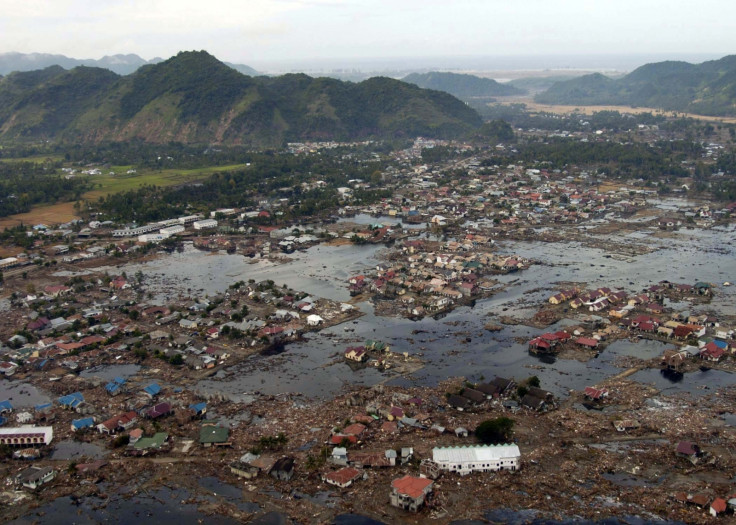Firing a barrage of deep-ocean sound waves at an oncoming tsunami could stop it in its tracks
It would require the energy of a nuclear bomb to stop a tsunami.

Tsunamis could be tamed before hitting shorelines by blasting them with sound waves out at sea, a UK mathematician has said, but marine acoustic scientists have questioned whether it would work in practice.
Firing acoustic-gravity waves at an oncoming tsunami could dissipate the wave's energy and reduce its height, according to a paper published in the journal Heliyon.
Acoustic-gravity waves are generated naturally by violent events underwater, such as the earthquakes that generate tsunamis. They travel fast, at the speed of sound in water – about 1,500 metres a second – or even faster when they interact with the sea floor.
These could theoretically be decoded to understand the properties of a tsunami such as its size, power, and what kind of acoustic-gravity waves would need to be fired back at it in order to reduce its destructive force.
If the acoustic-gravity waves could then be harnessed, modulated and fired back at the tsunami at the right frequencies, they could sap the power out of the wave, argued study author Usama Kadri of the University of Cardiff.
The energy of the waves that would need to be fired back at a tsunami in order to neutralise it would be roughly equal to the energy of the tsunami itself. For the Sumatra tsunami of 2004, which killed about 230,000 people, this energy would be roughly equal to that of a small nuclear bomb.
"We've proved that it is theoretically possible. The rest is probably a very challenging engineering problem," Kadri told IBTimes UK. "The question is how much effort would we put into this problem? Can policymakers see the benefit of that?"
Remember King Canute?
King Canute – also known as Cnut the Great – was born in 995 CE, and was king of England from 1016 until his death in 1035.
Canute is a very misunderstood historical character. In one story about him, written decades after his death, he was said to have put his throne next to the shore to demonstrate to his courtiers that he had no control over nature.
The story is usually misinterpreted to say that he believed that he did have power over nature to stop the tide.
However, he admits there are still some theoretical hurdles to overcome, such as how to deal with the fact that tsunamis do not have a single frequency but a range of frequencies, so the correct broad range of frequencies of acoustic-gravity waves would need to be generated. The next step in the research would be to test Kadri's theory experimentally on simple waves in the laboratory.

Marine acoustic researchers have questioned whether this neat idea could work in practice. Philippe Blondel, deputy director of the Centre for Space, Atmospheric and Oceanic Science at the University of Bath said while the calculations in the paper seemed rigorous, the idea would not work in a real, complex marine environment.
"It's a very nice idea, but the paper is assuming that we can do something about it," Blondel said.
The idea of releasing energy equivalent to a nuclear explosion near coastal areas was worrying, he said. "The cure might actually be worse than the event if it doesn't happen at the right place at the right moment."
The nature of how the tsunami propagates and the location of its origin could worsen this problem.
"What would happen to a tsunami in the middle of pacific, propagating to North America, South America, Japan, China – would every country have to send something equivalent to the Hiroshima bomb to stop it?"
The maths of the calculations are rigorous, Blondel said, but the application seems a bit too far away for now.
© Copyright IBTimes 2024. All rights reserved.






